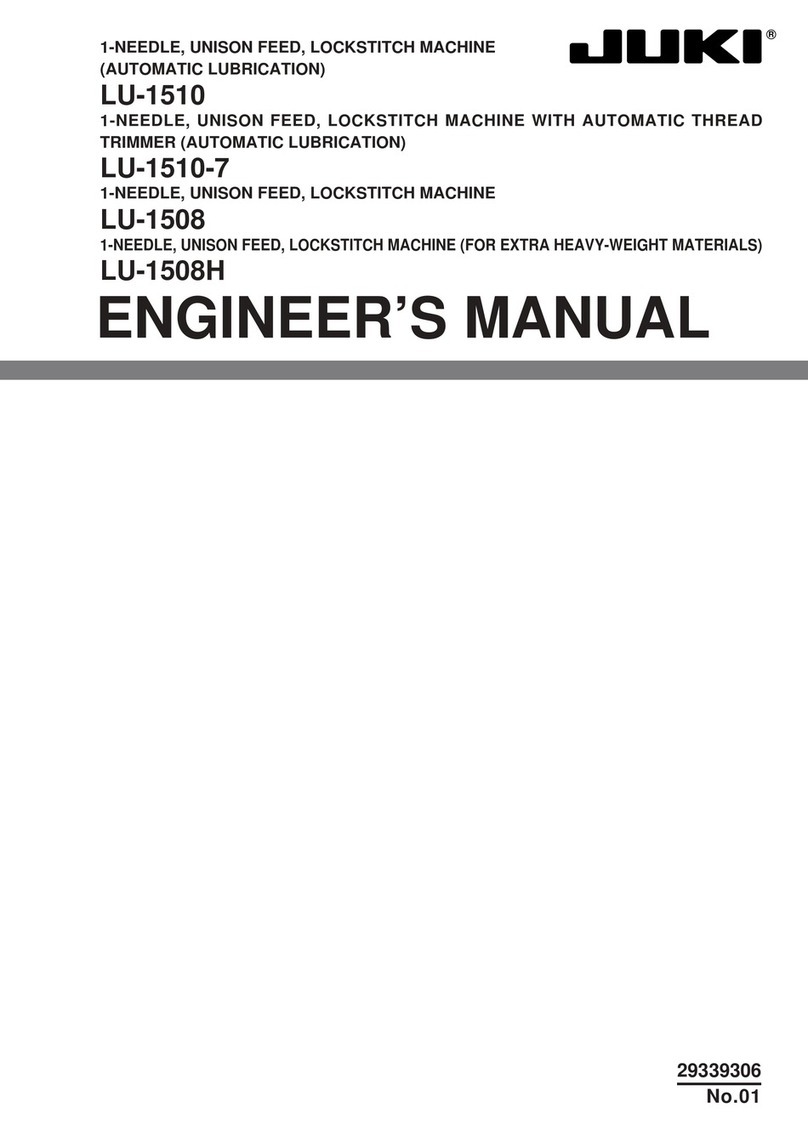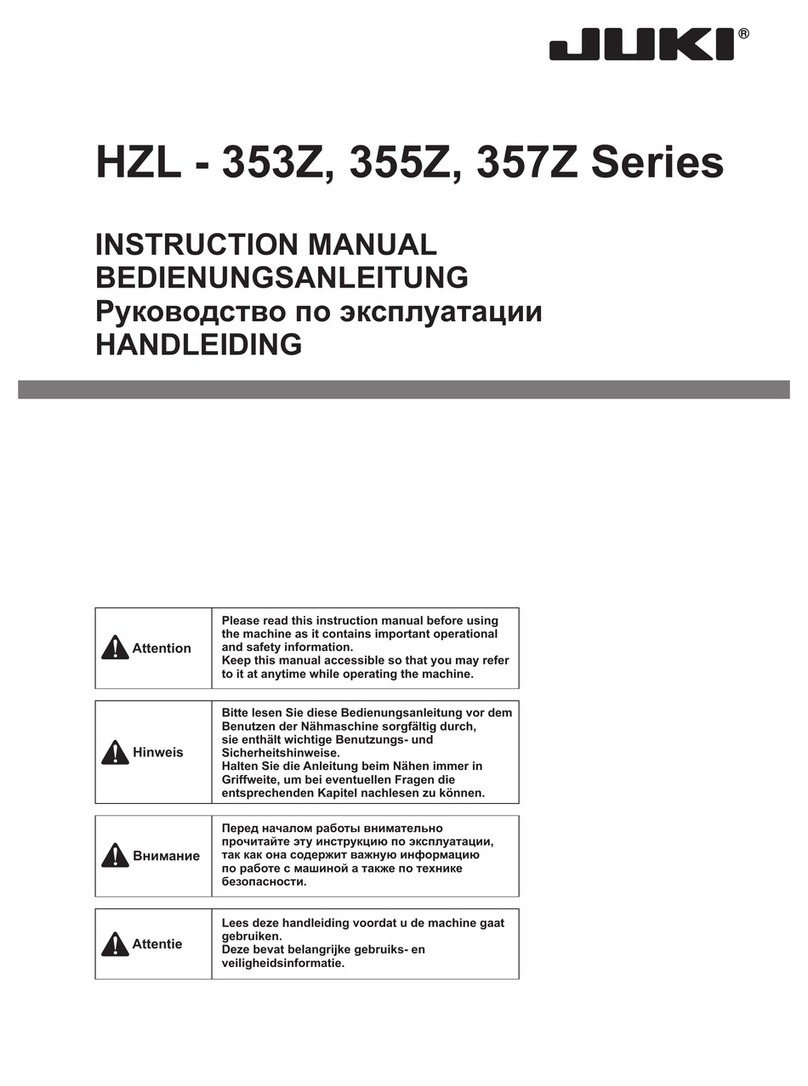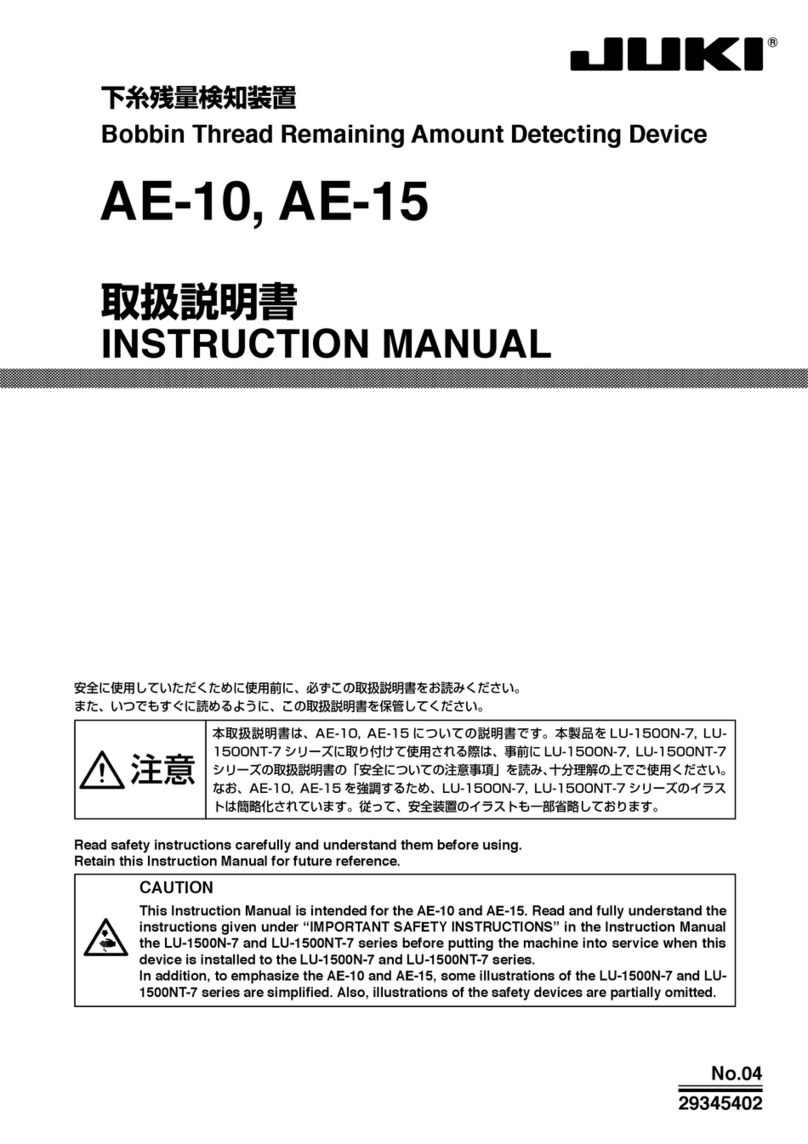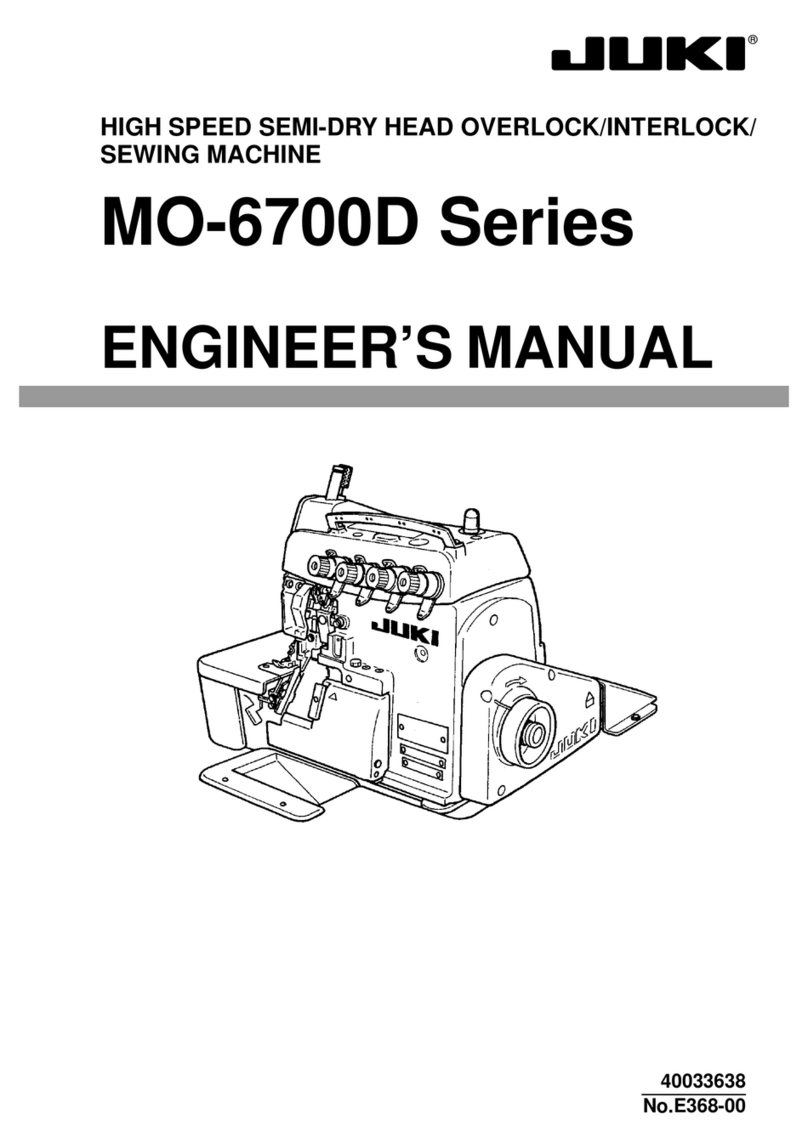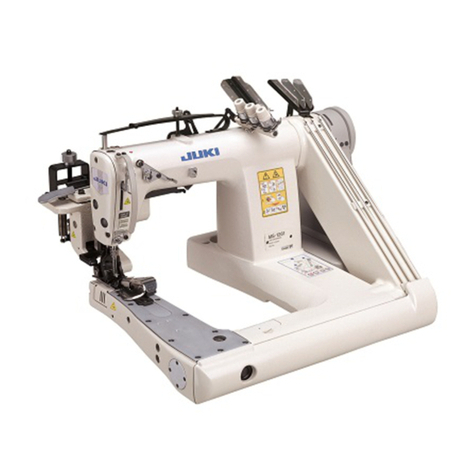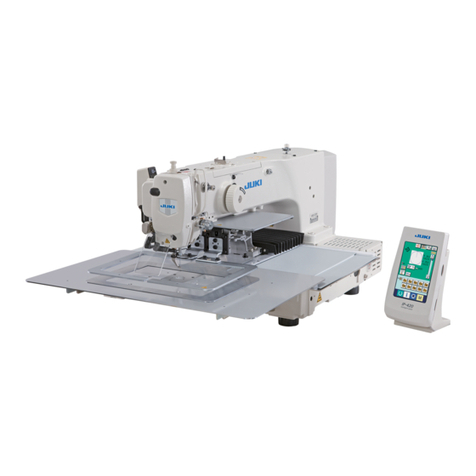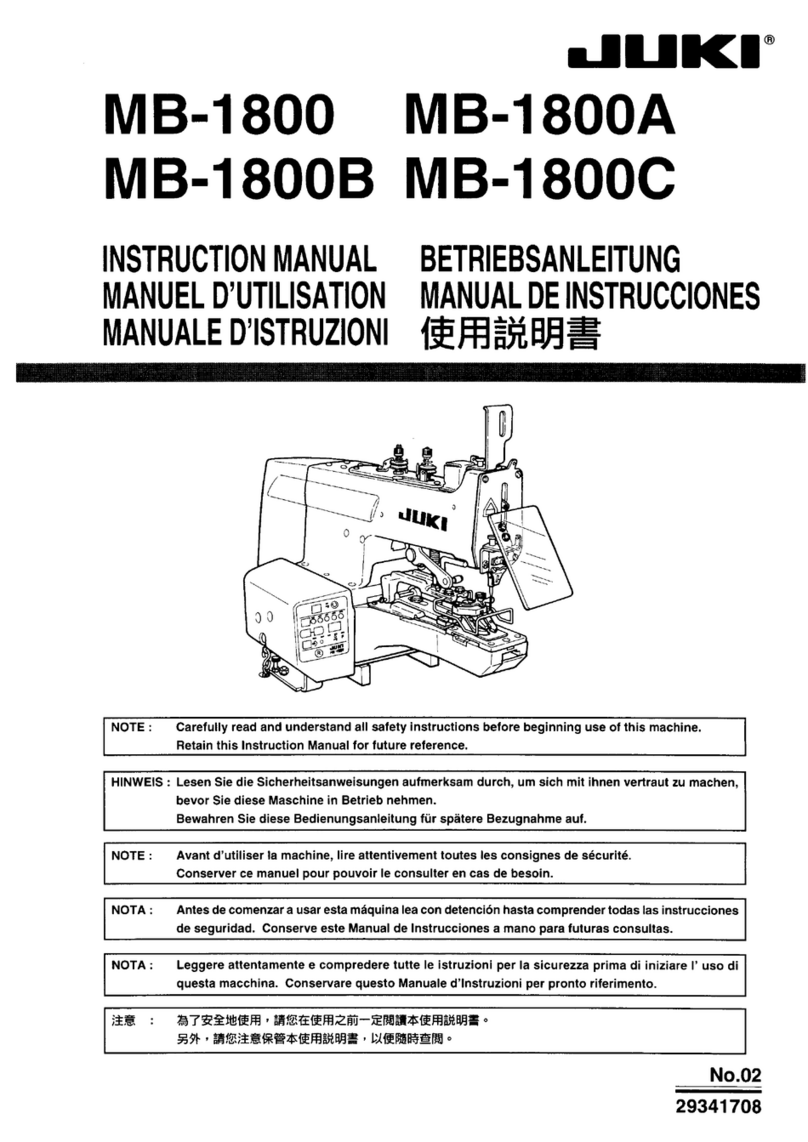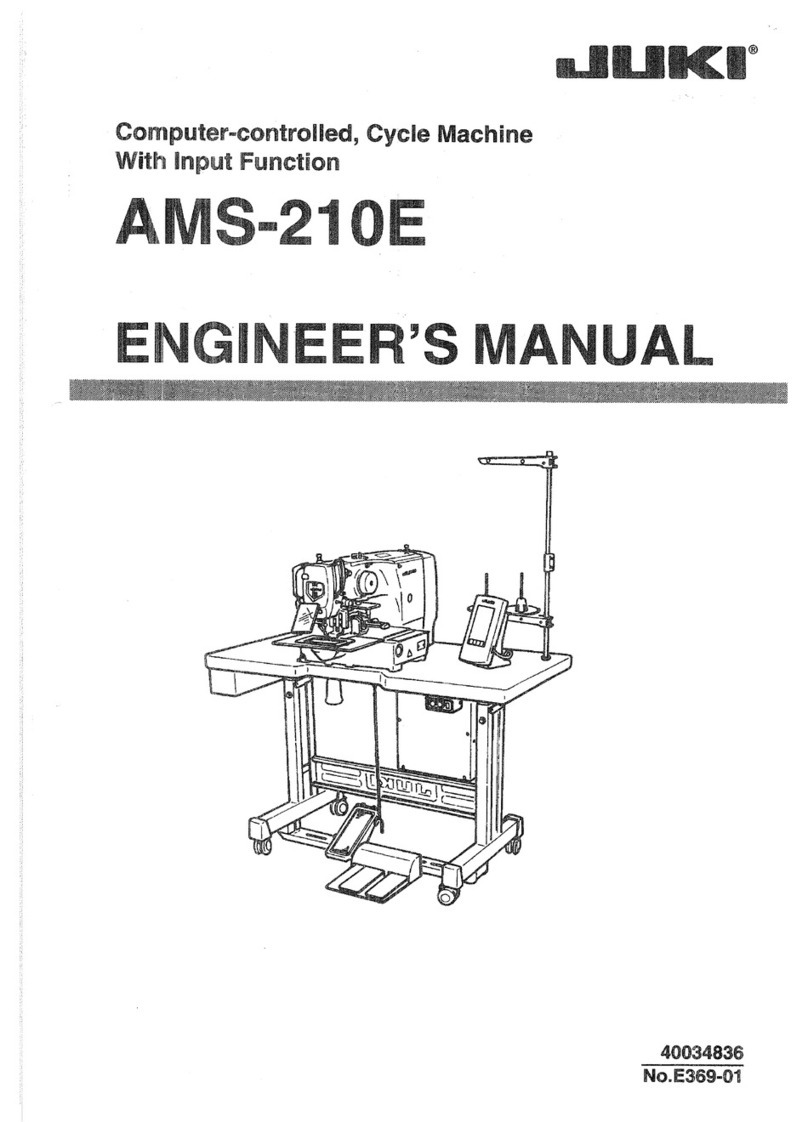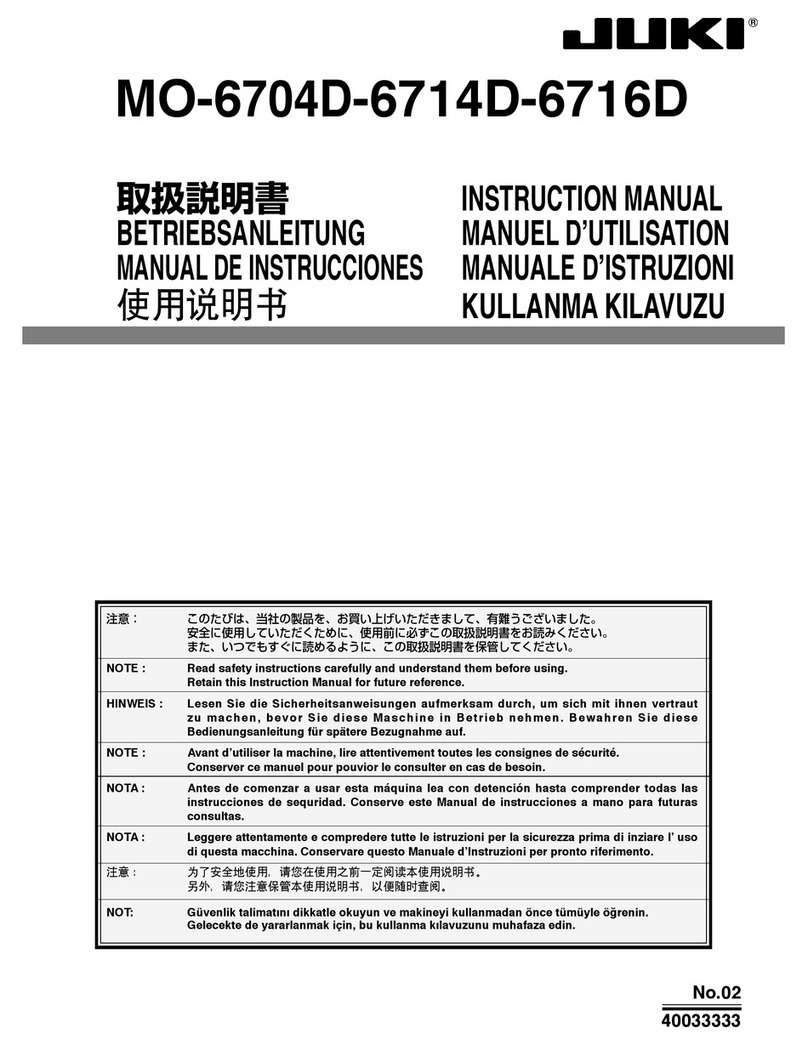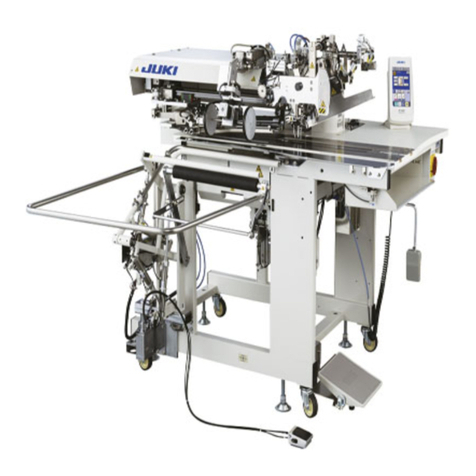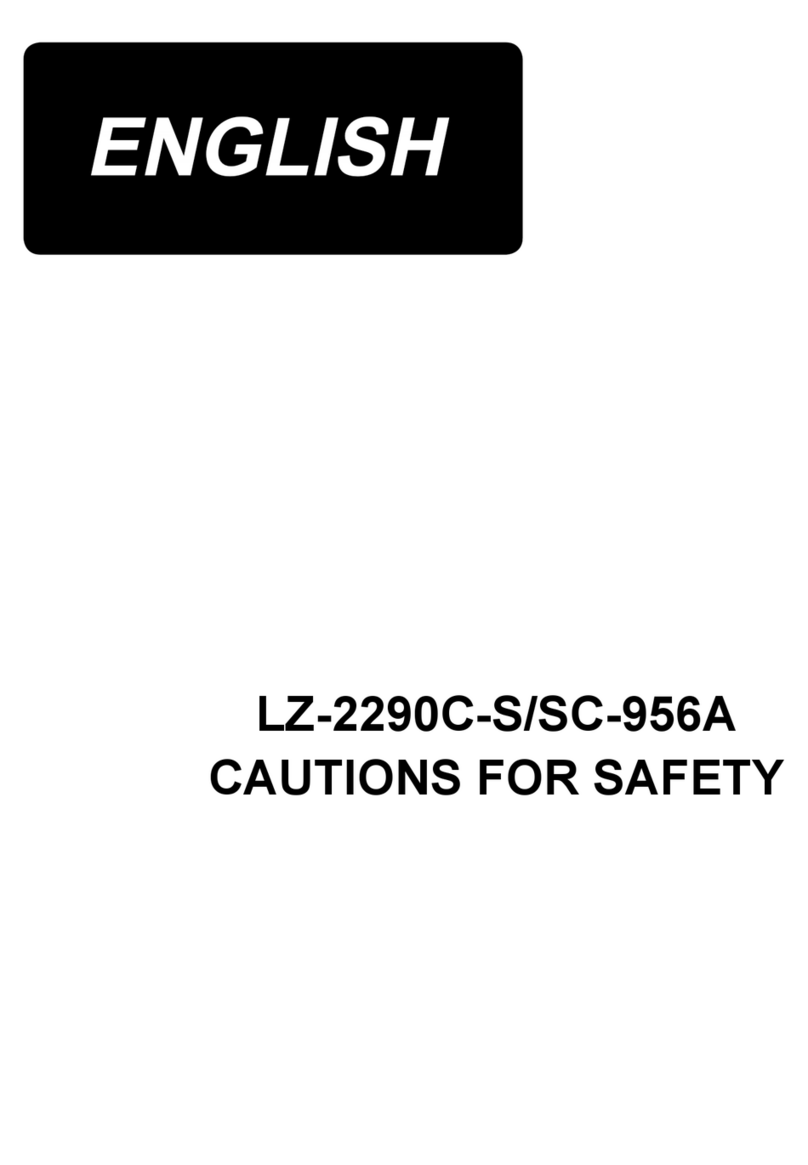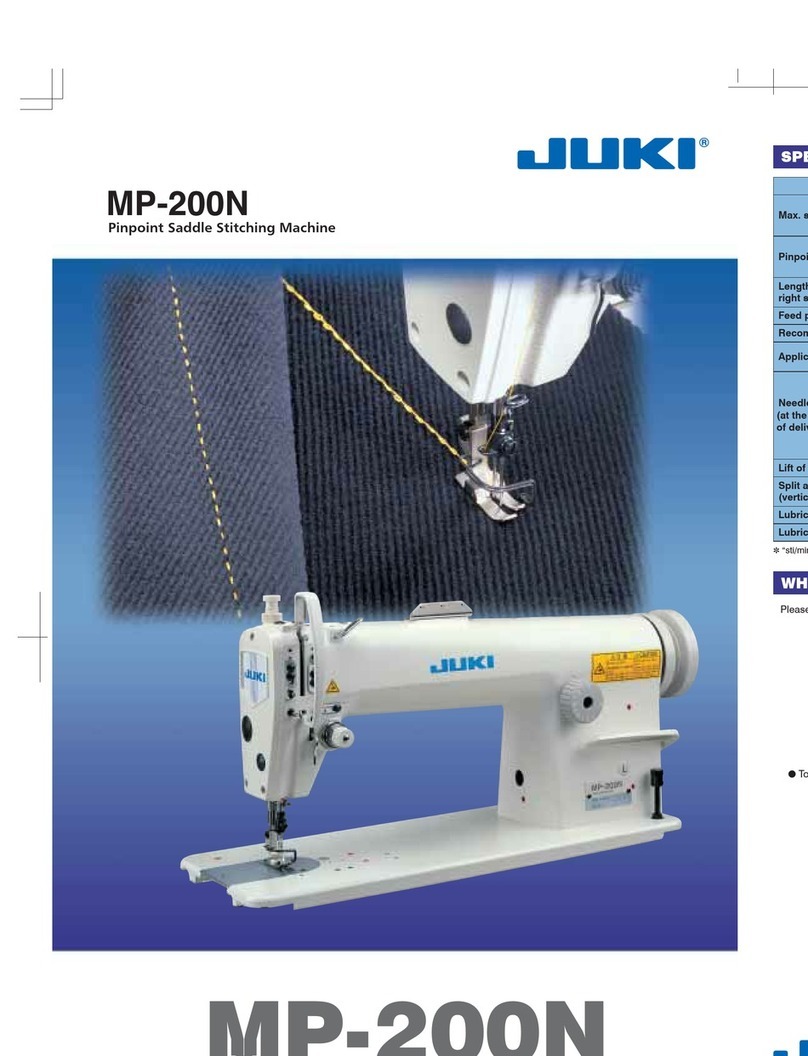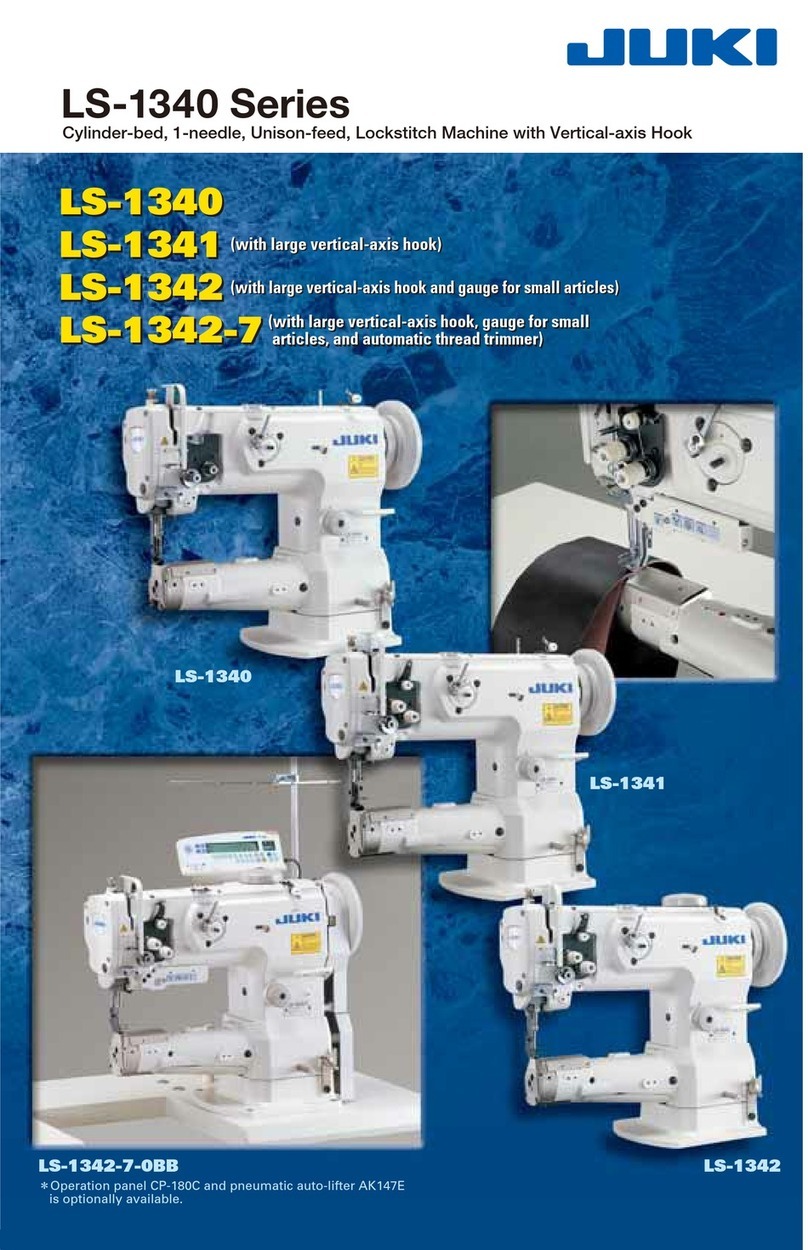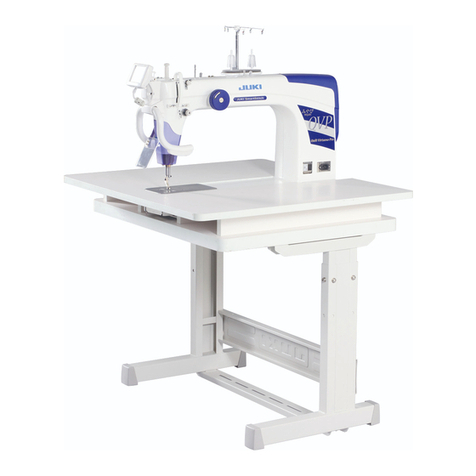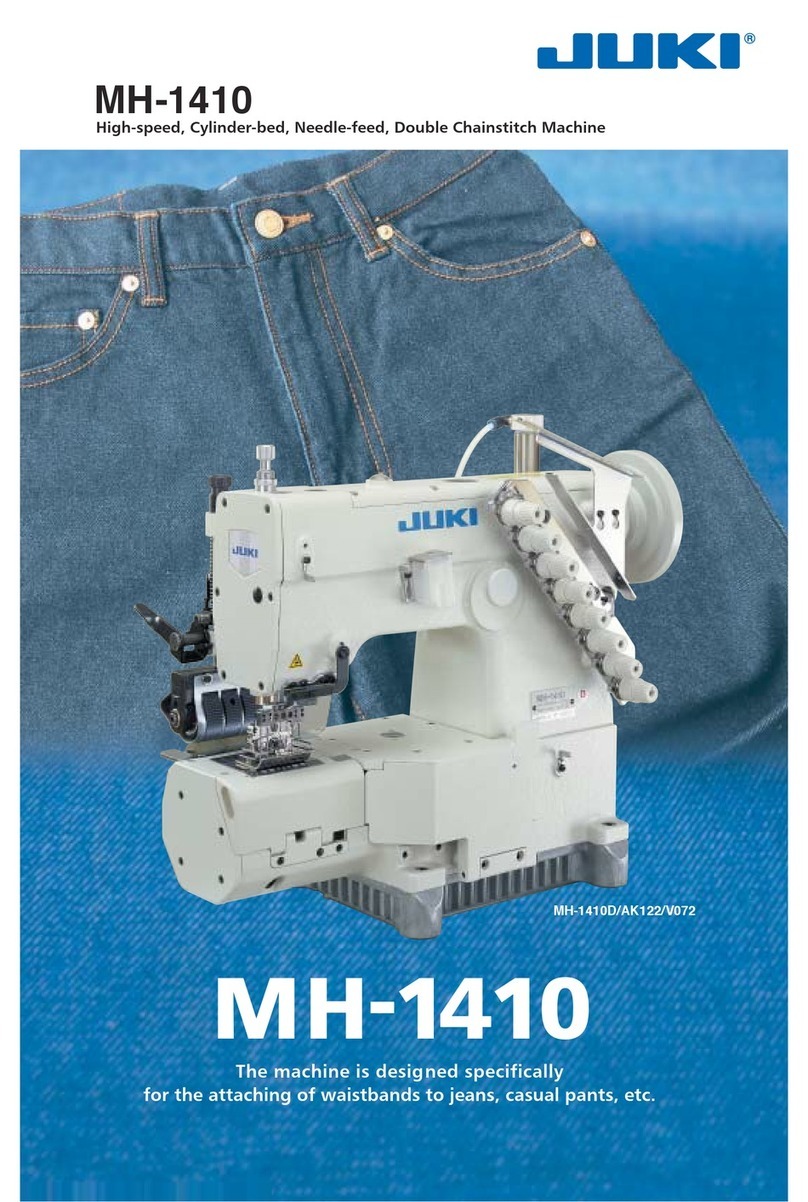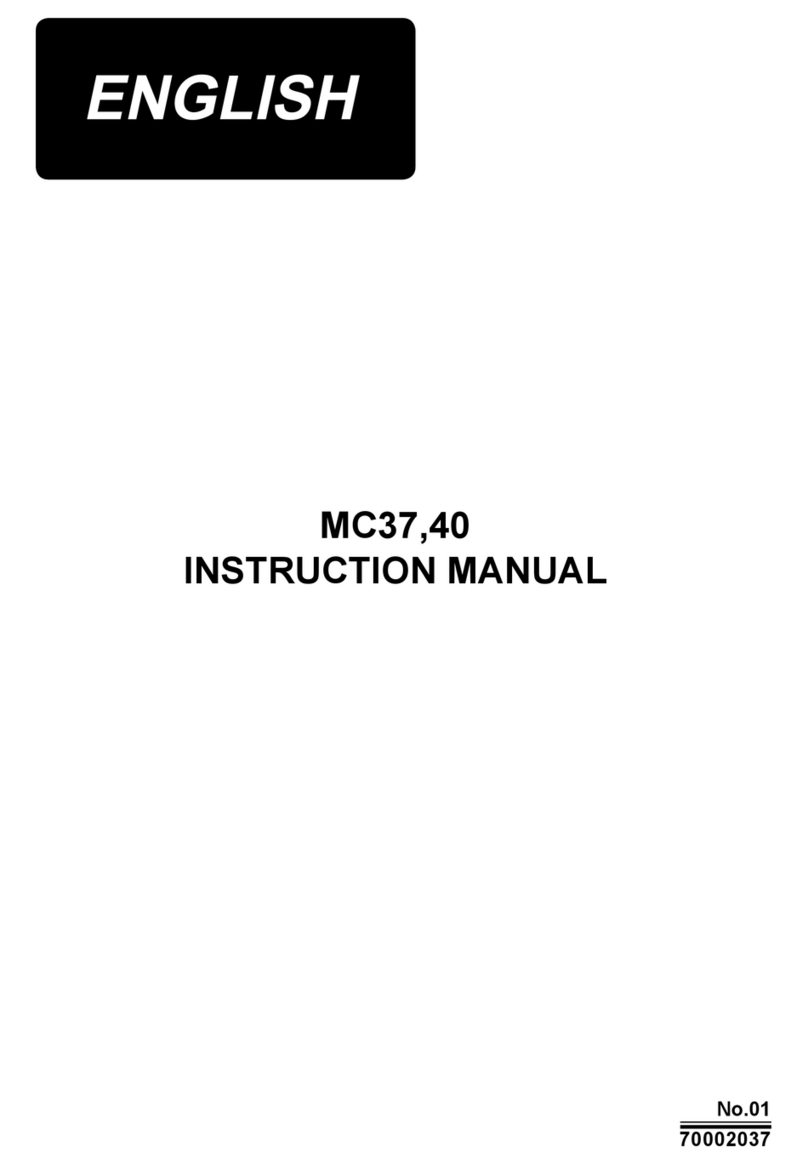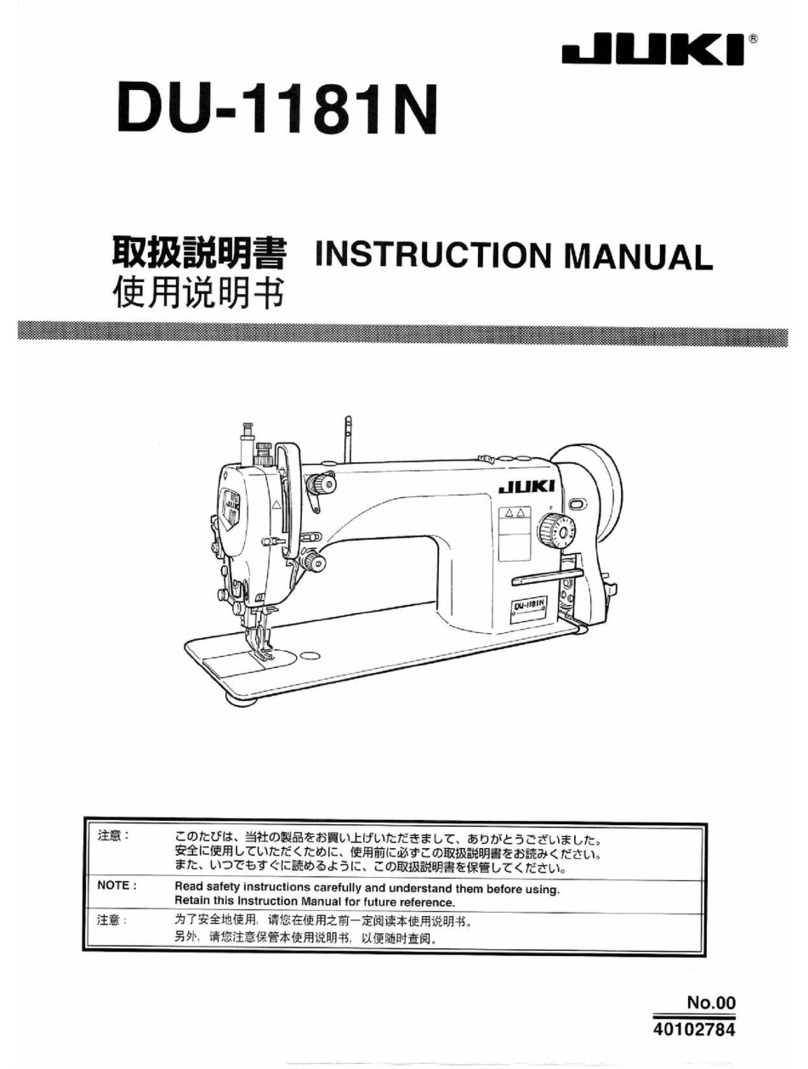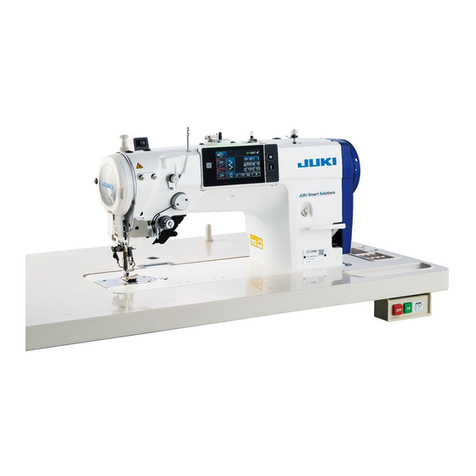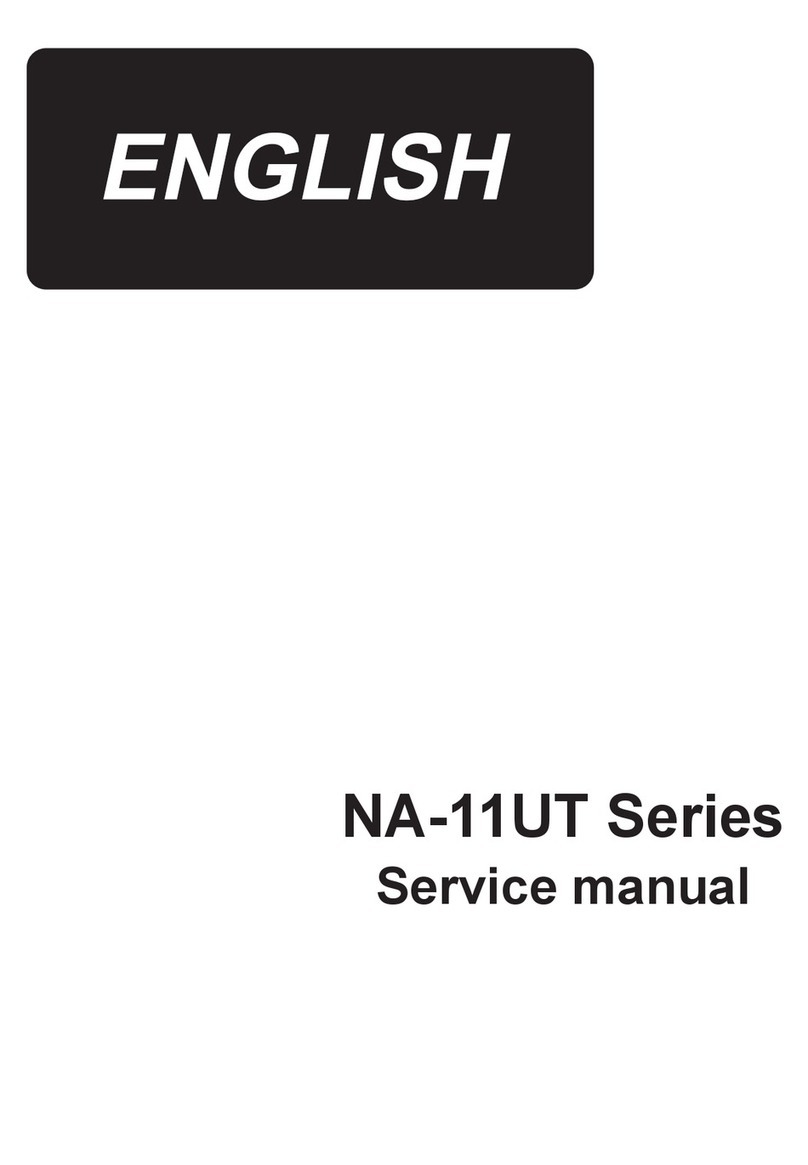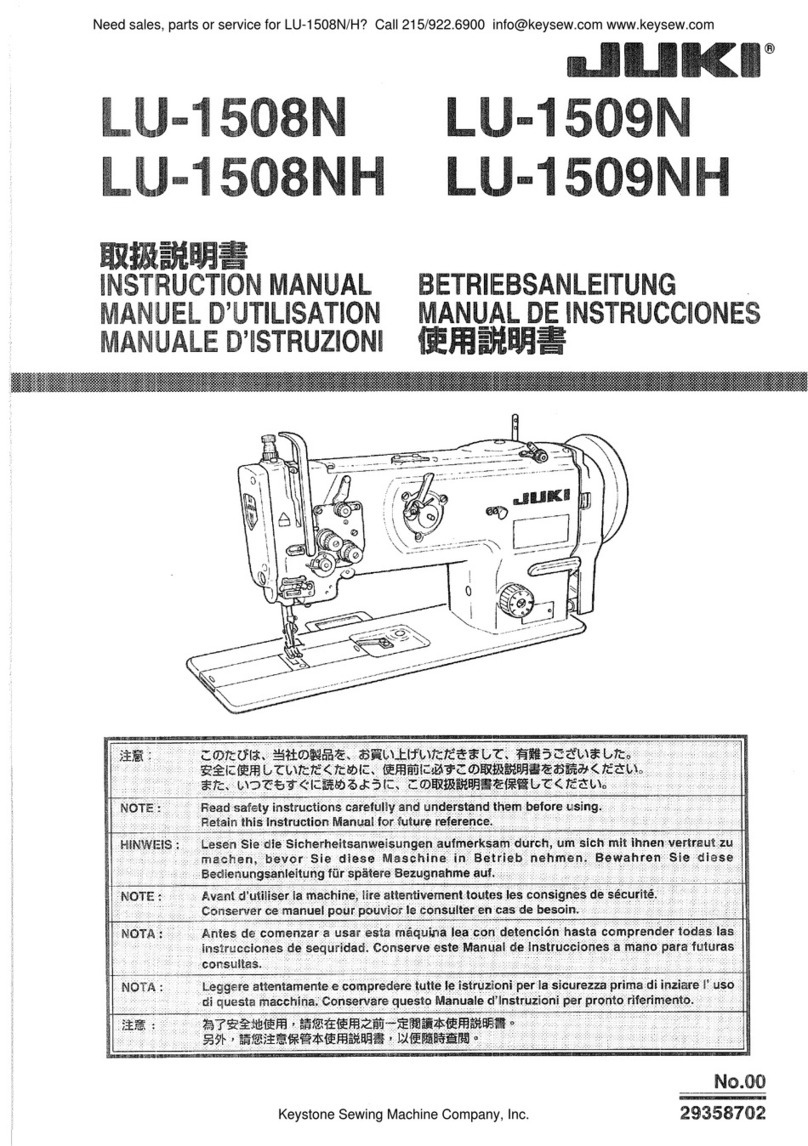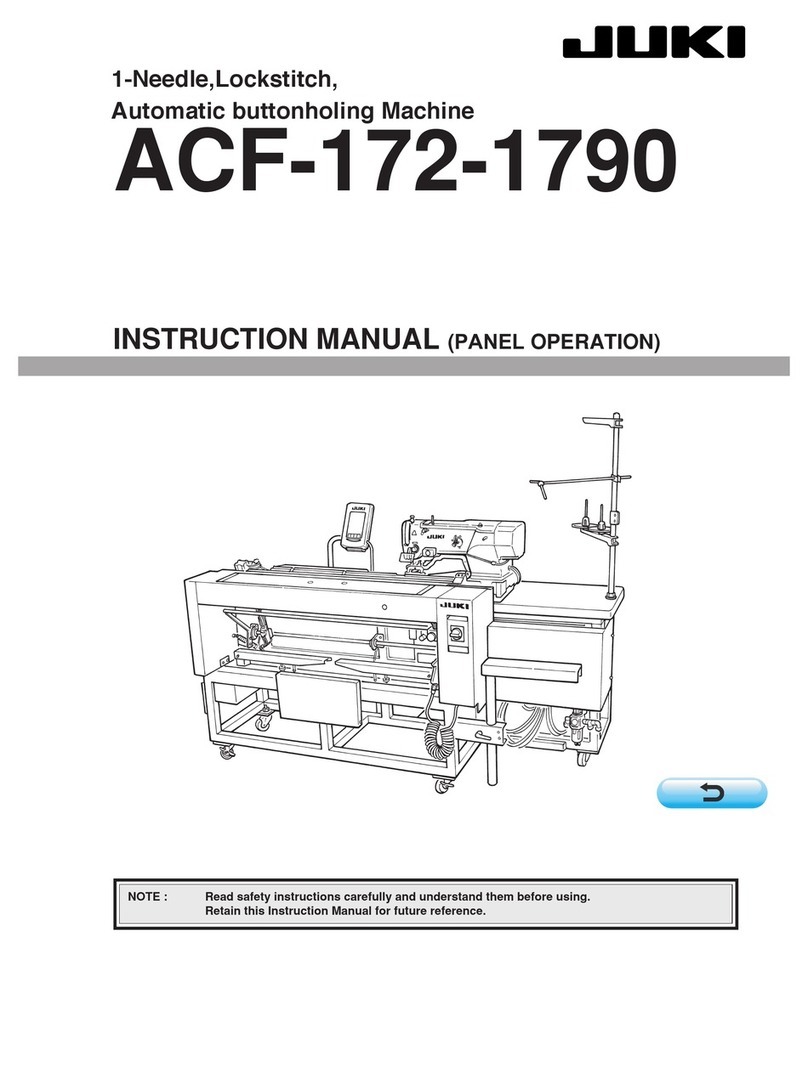CONTENTS
1SPECIFICATIONS............................................................................ 1
2NAME OF EACH COMPONENT ..................................................... 2
1. Appearance ............................................................................................................... 2
2. Inside of the cover.................................................................................................... 3
3STANDARD ADJUSTMENT / DISASSEMBLY AND ASSEMBLY... 4
1. Removing order of covers....................................................................................... 4
2. Installation of the throat plate ................................................................................. 8
3. Height of the needle bar......................................................................................... 10
4. Position of the feed dog......................................................................................... 12
5. Adjusting the stroke of the sub feed dog............................................................. 14
6. Height of the feed dog............................................................................................ 16
7. Feed dog timing...................................................................................................... 18
8. Position of the balance weights and the cams.................................................... 20
9. Projecting amount of the upper looper ................................................................ 22
10. Radius of the lower looper .................................................................................... 24
11. Adjustment of the loop lift ..................................................................................... 26
12. Timing between upper and lower looper.............................................................. 28
13. Installation of the needle guards .......................................................................... 30
14. Adjusting the looper thread take-up..................................................................... 32
15. Height and lateral position of the presser foot.................................................... 34
16. Adjusting the oating of the disk of the thread tension controller ................... 36
17. Adjusting the tension of the thread tension controller....................................... 38
18. Position of the needle thread take-up thread guide............................................ 40
19. Tension of the belt.................................................................................................. 42
20. Adjusting the needle bar connection guide of the needle threader .................. 44
21. Adjusting the needle threader hook ..................................................................... 46
22. Adjusting the looper threader timing ................................................................... 48
23. Adjusting the pump unit ........................................................................................ 50
24. Position of the lower knife..................................................................................... 52
25. Engagement of the upper knife with the lower knife .......................................... 54
